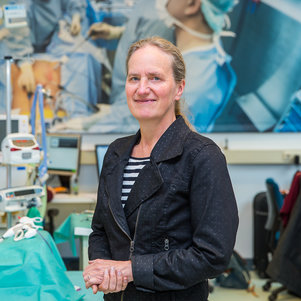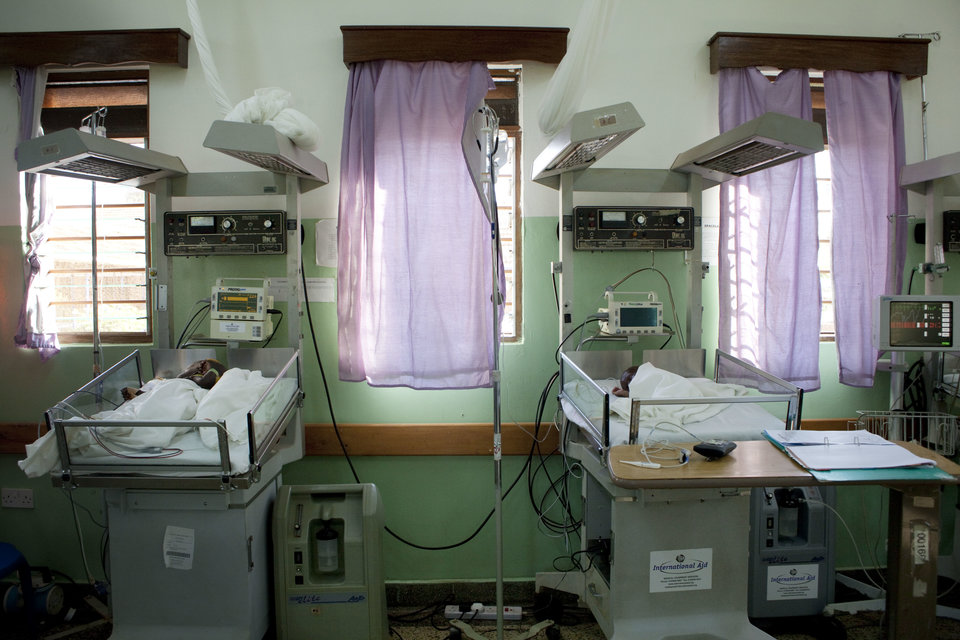We’ve all been there. You have had an accident, perhaps bruised or broken a limb and off you go to the accident and emergency department at the hospital. In Africa things are not quite as straightforward. Worldwide a lack of access to basic healthcare kills more people than malaria, HIV/aids and tuberculosis put together. That is why TU Delft professor Jenny Dankelman is all about developing safe and affordable surgical instruments.
‘85% of all 15 year-olds who needed a minor or more important surgical intervention at one point did not get it. Treatment, if available at all, is often at a couple of days travel. Often that is simply too long and patients are left with impairments varying from minor to life-changing, or even die,’ Dankelman says.
Complex surgical instruments
One of the most complex surgical instruments is an electrosurgical device used to make incisions and cauterise wounds. After cutting, blood loss is kept to a minimum by cauterising the wound as quickly as possible. “Even for highly trained doctors it’s not the easiest of instruments. It has different settings for cutting and cauterising. Research shows that surgeons don’t always know exactly what the different settings mean. As a result, the device is sometimes used inappropriately and that can have serious consequences.’ These devices also find their way to hospitals in developing countries.
Focus on the device
Clinical surgery departments have been involved in numerous efforts to raise funds for training local surgeons. ‘The focus is on the person who is using the device. But instead of trying to change the user I would rather simplify the device. That is how my group works: we try to find simple solutions. Moreover, apart from use, maintenance, the replacement of parts and an unstable electricity supply can also be a problem in hospitals in countries such as Kenya and India. These are all issues which need to be looked at when developing an instrument.’
Robot technology is a hot topic in Dankelman’s field of expertise. “That kind of technology is not always the best way forward, especially if you want to keep things affordable and simple. If you want to make an impact in countries where healthcare budgets are limited that is where your priority should lie.’
A growing programme and local collaboration
Four years ago, Dankelman was a pioneer in the field. Now, 3 PhDs, 2 postdocs and 25 students have joined her on the ‘surgery for all’ project, developing a variety of instruments. ‘We have created a basis for an electrosurgical device and learned much about ways in which 3D printing might be useful in, for instance Kenia.
Dankelman always considered local collaboration to be essential. “We have learned so much from the local doctors and staff at the technical support centres of hospitals in Kenia, Nepal and Surinam. And I continue to learn new things every day.’
With biomedical engineering experts from Kenyatta University, Dankelman is studying the context in which surgical instruments are being used. PhD Roos Oosting and industrial design PhD J. C. Diehl joined forces to explore the situation at various local hospitals. ‘Master students have already charted the journey medical instruments make in a local hospital. That gives us such a lot of input on wear and tear and the things the design should take into account,’ Oosting says.
Minimally invasive surgery
As professor of Minimally Invasive Surgery and Intervention Techniques Dankelman knows all there is to know about operating through small holes, or ‘keyhole surgery’ as it is popularly known. Using smart instruments, needles and flexible catheters, incision size can be brought back considerably, keeping the risk of infection to a minimum.
Dankelman’s dream is to start several projects around the improvement of surgical instruments for developing countries. ‘My colleague Tim Horeman is already working on instrument and operating room sterility issues. Ultimately I would like to take the step from open surgery to minimally invasive surgery.”





